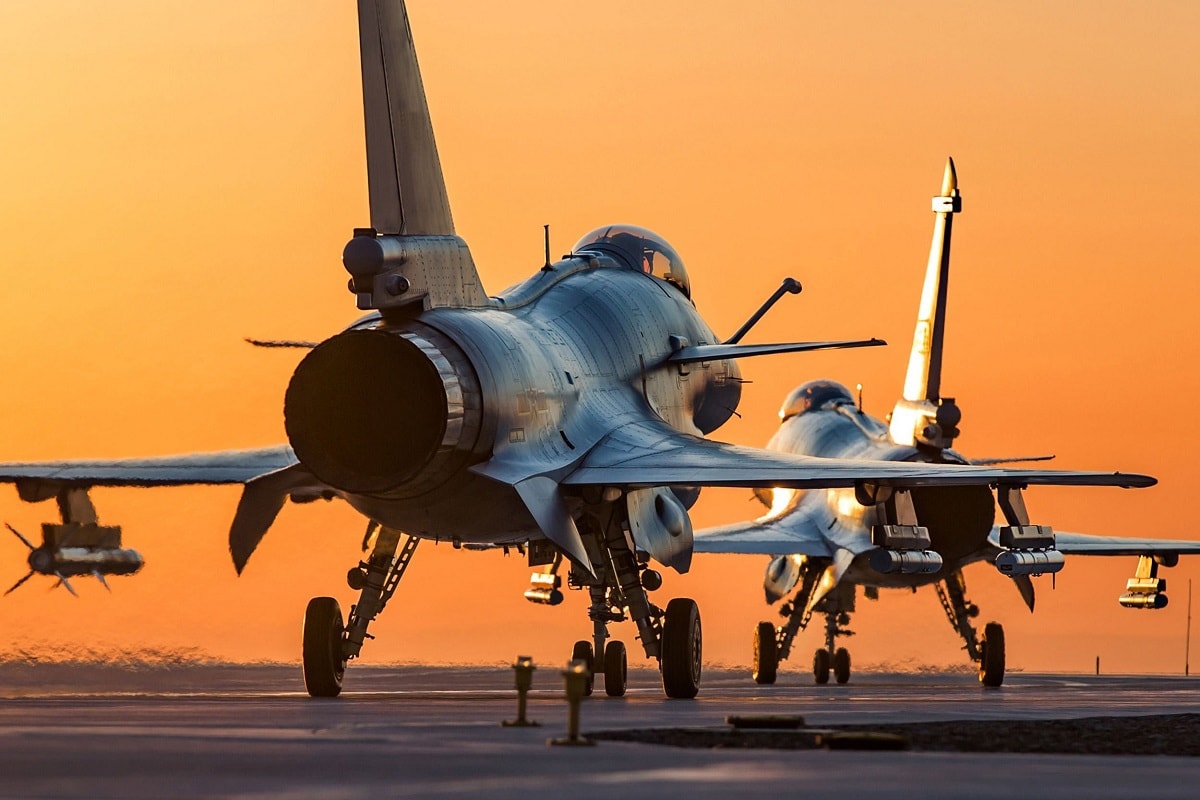Key Points: In a significant first, China deployed its KJ-500 AEW&C (Airborne Early Warning and Control) aircraft overseas for joint exercises with Egypt (“Eagles of Civilization 2025”).
-This unprecedented move, breaking from typical secrecy, showcased the KJ-500’s capabilities, including its fixed AESA radar and battle management functions.
-A key objective was demonstrating interoperability by datalinking with other Chinese platforms like the J-10CE fighter and potentially Egypt’s newly confirmed HQ-9B air defense system.
-The deployment signals deepening China-Egypt military ties and represents a major step in the PLAAF’s overseas operational experience and power projection efforts.
China’s Air Force Shows Off Latest Gear
China’s People’s Liberation Army Air Force (PLAAF) has dispatched its (Shaanxi) KJ-500 airborne early warning and control aircraft overseas for the first time. China sent the aircraft to Egypt for the “Eagles of Civilization 2025” joint air exercises being held this week with the Egyptian Air Force (EAF).
It is the first time the KJ-500 has been seen overseas, and it also marks the platform’s participation in an international military exercise. The aircraft’s visit has been seen as a historic “new step in China’s overseas air operations” and the “first bilateral air force drill between China and Egypt.”
The aircraft’s participation in these exercises has been reported as “aimed at enhancing coordination and operational understanding between the two countries.” But it is a more significant first for the PLAAF in that the pathological secrecy enforced by the Chinese security services has never permitted a PLA platform of this kind to deploy outside of the People’s Republic of China (PRC) borders.
Reports are that the aircraft is not only in Egypt to “show the flag” for Chinese aerospace but also to demonstrate the KJ-500’s capability to datalink with other PRC-built weapon systems. Foremost among these is the HQ-9B air defense system, which Egypt only confirmed the operation of within its own armed forces this month.
Air Defense and Interoperability
The HQ-9B is a Chinese reverse-engineered version of the Russian Almaz-Antei S-300V, although is rated as being less capable than its Russian copy. Confirming that fact are numerous analysts of the Chinese military pointing out for years that long after the PRC was producing HQ-9s in considerable numbers (to date, it is the largest produced air defense system in the world), Beijing continued to buy S-300s—the original item—from Russia.
The HQ-9B acquisition was a geometric expansion of Egypt’s air defense capacity. Cairo had been relying for years on old Soviet systems from the Vietnam era, such as the old S-75 Dvina (SA-2) and S-125 Pechora (SA-3). These have been supported by short—and medium-range Russian Tor-M2 (SA-15) and Buk-M2 (SA-17) that Egypt procured in the 2010s. Together, they are not a highly effective combination.
The KJ-500 was accompanied to Egypt by the YU-20 aerial refueling aircraft and the Chengdu J-10CE fighter aircraft. These three operated in concert during the exercises in Egypt, along with EAF Mikoyan MiG-29s. The subliminal message that appears to be sent is that these aircraft data linked with the HQ-9B present a formidable integrated air defense network.
The Russian-made MiG was likely included because its onboard systems are more compatible with Chinese aerospace radar and datalink systems than the Western aircraft in Egypt’s inventory.
“This linkup with the Egyptians seems to be a high priority with the Communist Party leadership in Beijing,” said a NATO-nation retired intelligence officer. “Release of the KJ-500 to be flown to Egypt and the risk of compromising the signals intelligence that could be gained by the US and others monitoring that aircraft while in the region. Also notice the promotion given by the Global Times to this expedition.”
The Global Times is one of the Communist Party’s most steadfast and widely disseminated English-language outlets in the PRC. Its tone is somewhere between straight pro-party propaganda and a tabloid. Its endorsement of the Chinese participation in the Egyptian event is another sign of high-level interest in the exercise back in Beijing.
KJ-500’s Industrial Constellation
The designers of the KJ-500 have borrowed a page from the cooperation between enterprises that developed the Russian Beriev A-50. That system is an Ilyushin Il-76 aircraft equipped with a radar developed at the Vega Group design bureau. Although it is an Ilyushin airframe, the Beriev plant in Taganrog that installs the radar onboard is considered the OEM for the system.
In the same vein, the KJ-500 is built on a Shaanxi Aerospace Corporation Y-9. Still, the radar is from the China Electronics Technology Corporation (CETC) 38th Institute, which is otherwise known as the East China Research Institute of Electronic Engineering (ECRIEE) in Hefei, Anhui Province.
The radar is not a rotating radome but a fixed Active Electronically Scanning Array (AESA) that provides full 360-degree coverage. This radar system can detect and track multiple airborne and surface targets at extended ranges.
Other than being able to hand off targets to other weapon systems, the aircraft also acts as a battle management platform. It is reported that this function, a capability that the Egyptians would like to have in their armed forces, is one of the central capabilities of that aircraft showcased in its Egyptian debut.
About the Author:
Reuben F. Johnson is a survivor of the February 2022 Russian invasion of Ukraine and is an Expert on Foreign Military Affairs with the Fundacja im. Kazimierza Pułaskiego in Warsaw. He has been a consultant to the Pentagon, several NATO governments and the Australian government in the fields of defense technology and weapon systems design. Over the past 30 years he has resided in and reported from Russia, Ukraine, Poland, Brazil, the People’s Republic of China and Australia.

